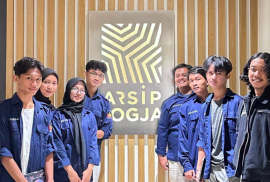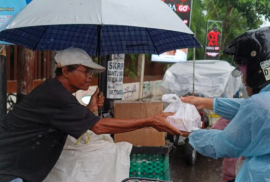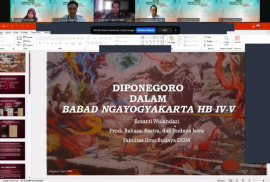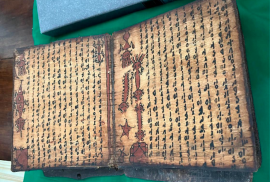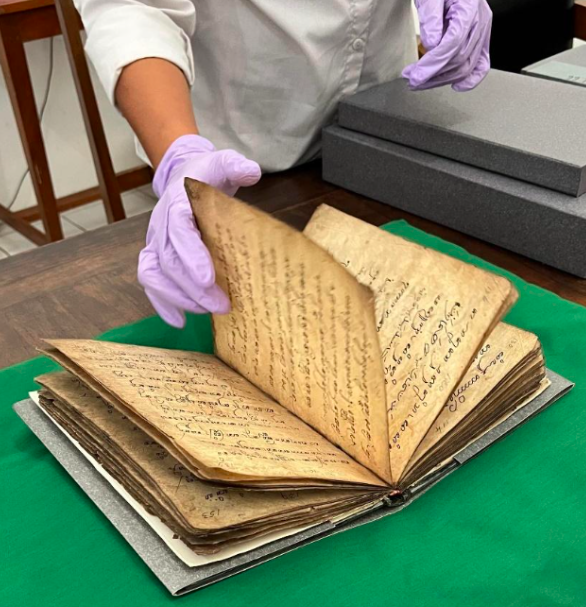Yogyakarta, 30/4/2025 – Tuesday, April 15, 2025, in order to fulfill the mid-term exam assignment for the Productive Written Javanese Language course taught by Mas Imam Prakoso, students of Language, Literature, and Culture class of 2024 visited the Jogja Archives Diorama. The Jogja Archives Diorama is located at Jl. Janti No.Lt. 1, Banguntapan District, Bantul Regency, Special Region of Yogyakarta.
The Jogja Archives Diorama displays archives that have a long historical connection from the land of Yogyakarta, namely from the era of Panembahan Senopati to the present day. The archives on display are of various forms, from those in textual form, photographs, audiovisuals, and others. These archives are managed and exhibited with the aim that the general public can learn lessons related to the history of the Special Region of Yogyakarta.
To enter the Jogja Archives Diorama building, students must pay a fee of Rp20,000.00. Meanwhile, the general public must pay IDR 30,000.00, and foreign tourists IDR 100,000.00. If you bring a group of more than 20 people, not all of them can enter at once. When entering the room, all 44 students and 1 lecturer were divided into 2 groups and 2 sessions.
Of the 44 students of the 2024 class, there were some who had never visited this exhibition before. “When entering the diorama room, it was the first time I saw a fairly complete archive from the Mataram Kingdom era to the present era, each room was explained in detail by the officer, and the most interesting thing is that this place is very suitable for students of Literature, History, Anthropology, and other social science clusters, because there are so many sources of information related to the science that can be studied by students in these departments,” said Ma’ruf, one of the students who was visiting the Yogyakarta Archive Diorama for the first time.
The most interesting thing according to Ma’ruf was that when entering the first room, the students were immediately greeted with animations from the Mataram Kingdom era. There it is explained how the Mataram Kingdom was formed, then when entering the last room there is a simulation or depiction of the 2006 Bantul Earthquake, there visitors feel as if they felt the vibrations of the earthquake when the earthquake occurred. With this interactive diorama, it is hoped that students and the general public will be more enthusiastic about appreciating and exploring the history of their own hometown.
[Public Relation of Javanese Literature, Haryo Untoro]

